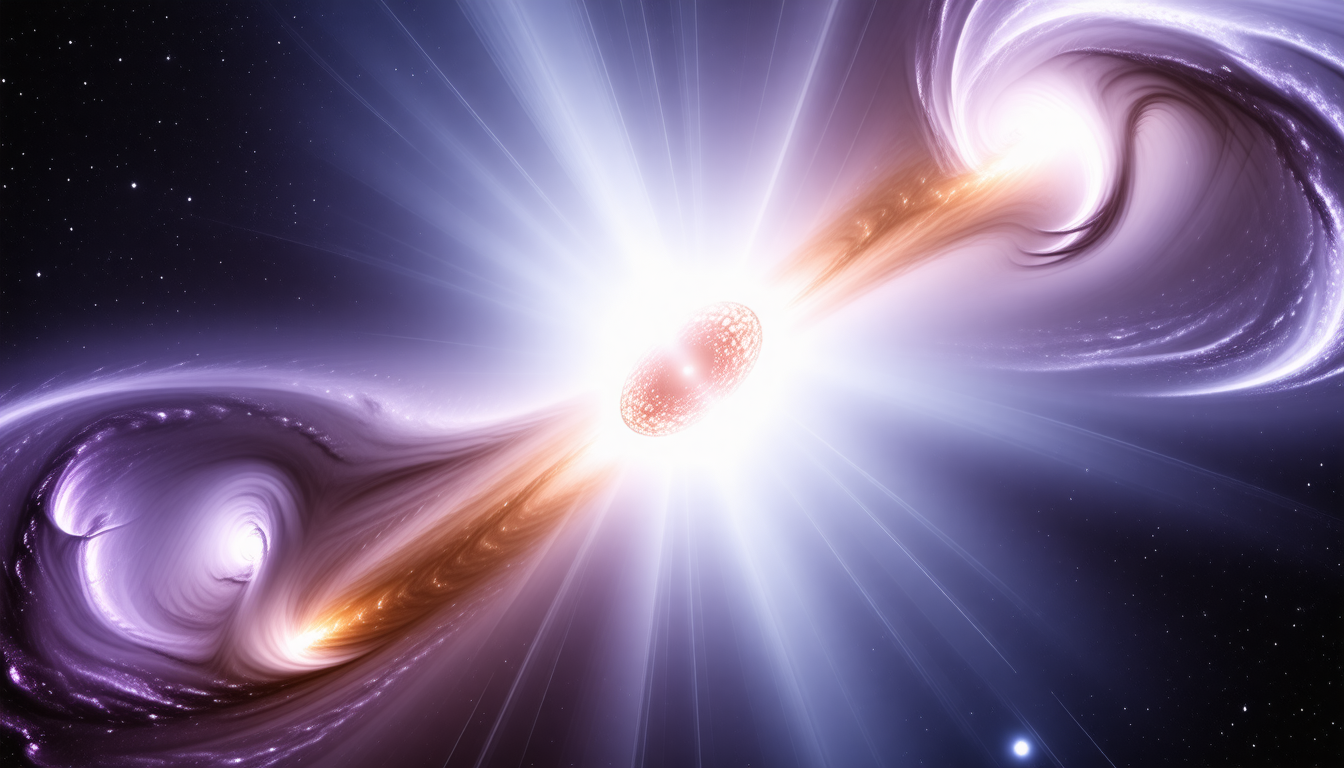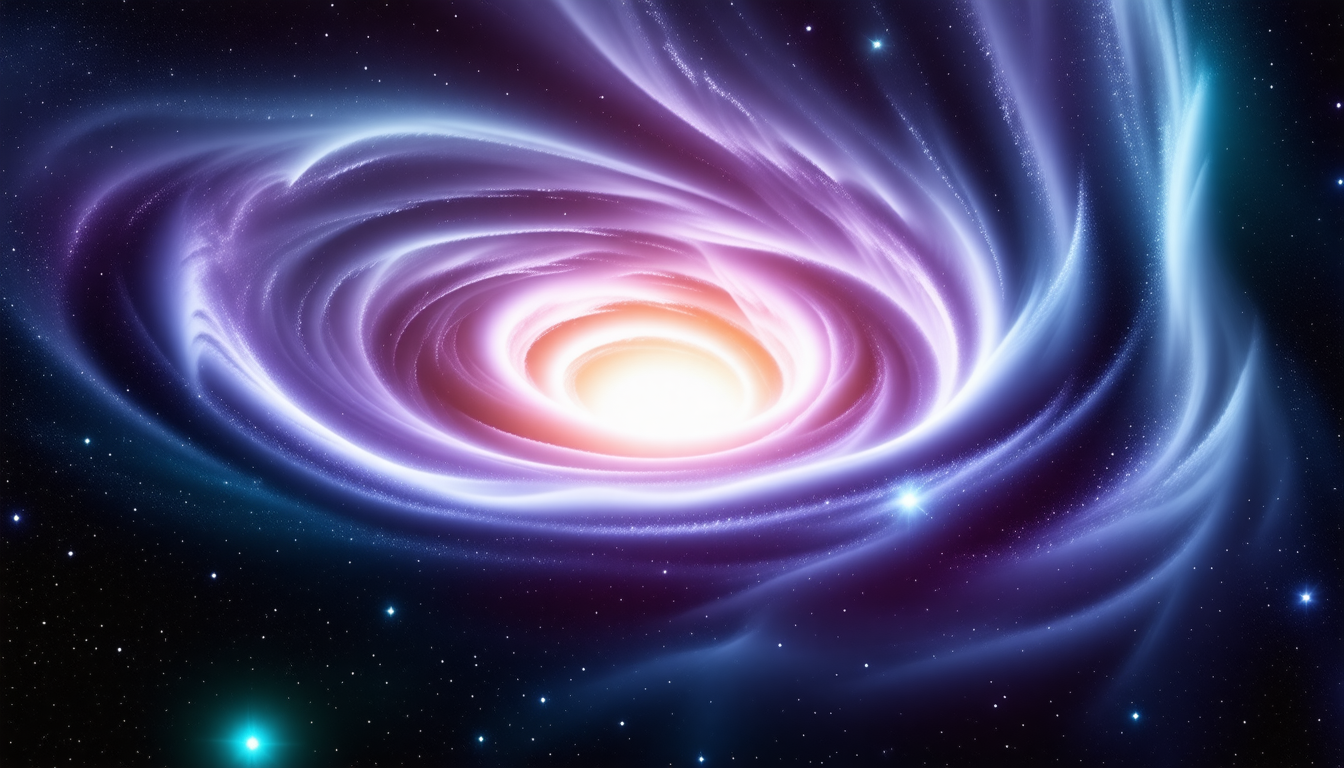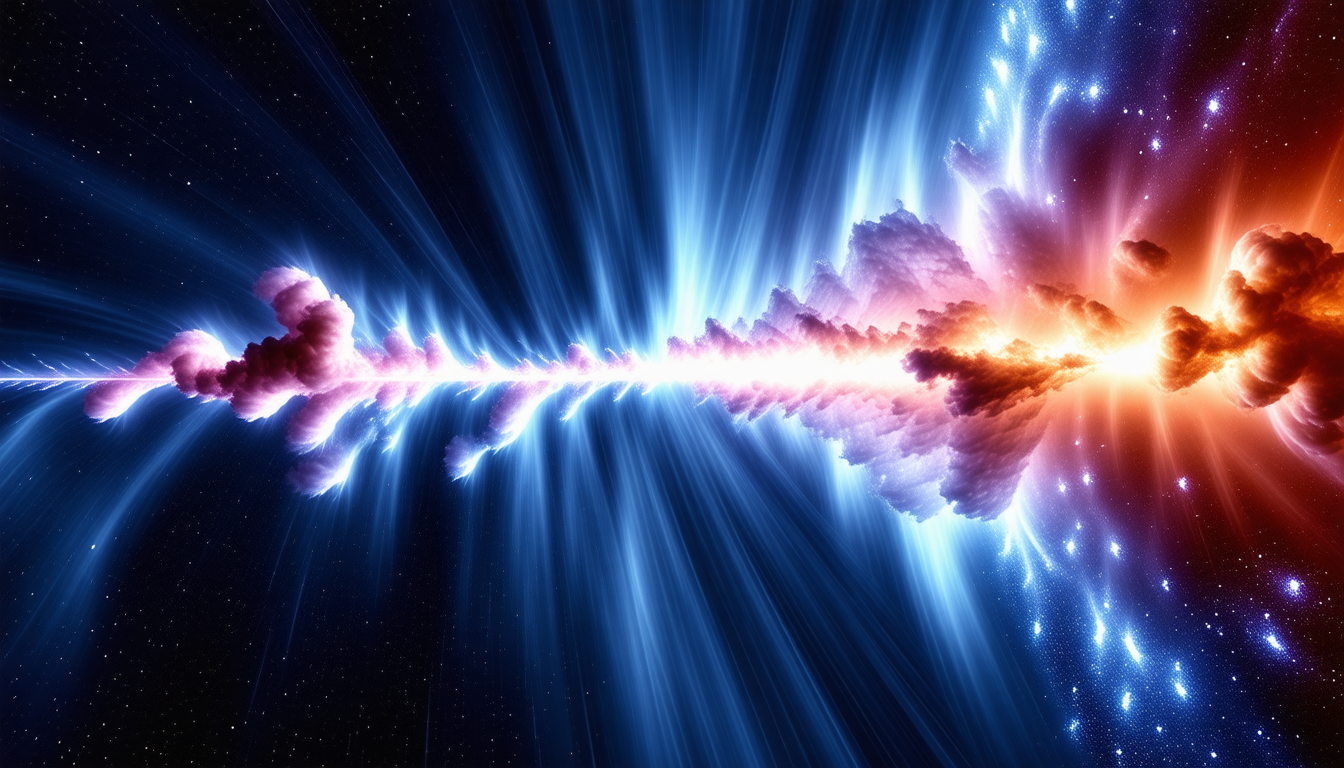Exploring the Cosmic Frontier

Understanding The Edge Of The Universe
As we embark on a journey to comprehend the edge of the universe, we find ourselves at the forefront of modern cosmological inquiry, grappling with concepts that challenge the very framework of reality. The observable universe, a mere fraction of the whole, extends approximately 93 billion light-years in diameter, filled with galaxies, stars, and cosmic dust. Yet beyond this realm lies a tantalizing question: what exists beyond the reach of our telescopes and instruments?
To grasp the nature of the universe’s edge, we must first understand the fundamental principle that the universe is expanding. This expansion, first noted by Edwin Hubble in the early 20th century, reveals that galaxies are moving away from us, each carrying with it the memory of its own cosmic past. This motion invites us to think not only the distances involved but also the implications—especially as we think the Big Bang, which marks the inception of the universe approximately 13.8 billion years ago. In this light, the edge of the universe becomes less a physical boundary and more a reflection of our current observational limits, a horizon shaped by the finite speed of light and our technological capabilities.
The concept of the observable universe implies that there is always more beyond what we can detect. As light from distant objects travels through the cosmos, it carries with it a history—an echo from eons past. The cosmic microwave background radiation (CMB), a remnant of the early universe, serves as a cosmic map that provides insights into the universe’s formation and structure. By studying the CMB, researchers have gathered evidence supporting the Big Bang model and refined our understanding of the fundamental parameters governing the universe.
Despite these significant strides, the true extent of the universe remains an enigma. There are competing theories about its overall structure. One perspective suggests the universe is infinite, possibly extending indefinitely with galaxies beyond our recognition. In contrast, a finite model proposes that the universe has a curved topology, akin to the surface of a balloon, where travel in one direction could eventually bring you back to your starting point.
Furthermore, complex theories such as cosmic inflation, introduced by physicist Alan Guth, provide additional layers to this discussion. Inflation posits that shortly after the Big Bang, the universe underwent an exponential expansion, effectively stretching the very fabric of spacetime. This model raises intriguing questions regarding what lies beyond our observable limits—regions that perhaps have been pushed away by the rapid expansion, inaccessible to us in both time and space.
As scientists push the boundaries of our observational capabilities through advanced technological innovations like the James Webb Space Telescope, the quest to understand the universe’s edge is becoming increasingly intricate. Such observatories not only help to unveil the architecture of distant galaxies but also contribute valuable data that informs our models of cosmic evolution. This ongoing exploration invites an ever-deepening dialogue around the nature of existence itself, urging us to question whether the universe is infinite, finite, or something far more nuanced than our current paradigms suggest.
It is vital to acknowledge that understanding the edge of the universe also encourages reflections on humanity’s place within the vast cosmic tapestry. As we contemplate our role in the universe’s grand narrative, we face existential questions about connection, responsibility, and stewardship. The edge is not merely a physical limit but a philosophical frontier that beckons us to explore not just what lies beyond, but what it means to exist in an ever-expanding cosmos filled with mysteries waiting to be unraveled.

Cosmic Phenomena At The Limit
The edge of the universe is a landscape filled with cosmic phenomena that challenge our understanding and ignite our curiosity. As we stretch the limits of our observational capabilities, we encounter phenomena that reflect the immense energy and dynamic processes at play throughout the cosmos. Among the most remarkable features observable at this boundary are gamma-ray bursts, quasars, and the enigmatic cosmic microwave background radiation.
Gamma-ray bursts represent some of the most energetic explosions in the universe, releasing more energy in a few seconds than our sun will emit over its entire lifetime. These cataclysmic events are thought to occur during the collapse of massive stars into black holes or through the merger of neutron stars. The detection of these bursts enables astronomers to probe the extreme physical conditions prevalent in these explosive environments. Observing gamma-ray bursts not only provides insight into the nature of stellar evolution and explosive phenomena but also allows us to examine the conditions that may have existed in the early universe during its formative years. These brief, powerful flashes of light illuminate the edges of our understanding and inspire further exploration into the nature of time and space.
Quasars, another fascinating aspect of cosmic phenomena at the limit, represent the incredibly bright cores of distant galaxies powered by supermassive black holes. As matter spirals into these black holes, it heats up and emits vast amounts of energy across the electromagnetic spectrum, often outshining the stars in their host galaxies. Quasars serve as beacons from the early universe, shining light on conditions that prevailed billions of years ago, thereby acting as distant time capsules that enable researchers to gather clues about cosmic evolution. The discovery and study of quasars have played a pivotal role in our comprehension of the universe’s expansion, structure, and the distribution of dark matter.
At the very foundational level, the cosmic microwave background radiation (CMB) offers us a profound glimpse into the universe’s infancy. This relic from the Big Bang permeates all of space, carrying with it the deepest secrets of the early universe. The CMB reflects a time when the universe was hot and dense, allowing researchers to piece together information about the initial conditions that led to the formation of galaxies and clusters of matter. By analyzing variations in the temperature of this radiation, scientists have been able to infer the distribution of matter in the early cosmos and refine models of cosmic inflation, a phenomenon this is believed to have exponentially expanded the universe in its first moments. The study of the CMB continues to provide vital insights, not only into the procedural evolution of the universe but also into the mysterious forces of dark matter and dark energy that continue to shape its fate.
As we stand at the edge of the universe, we are reminded that each cosmic phenomenon encountered is not merely an object of study but a gateway to understanding our existence within the grander tapestry of the cosmos. These phenomena serve as markers of time and symbolica representations of the forces and energies that govern the universe. They urge us to reassess our understanding of fundamental principles and beckon us to explore the majestic intricacies that lie on the periphery of human knowledge.
Equipped with advanced technologies, cosmologists, astronomers, and physicists are better poised than ever to continue this journey of discovery. Each revelation about the phenomena at the edge of the universe invites new questions and fosters a deeper appreciation for both the cosmic processes unfolding beyond our senses and our interconnectedness with the wider cosmos. In this realm of possibility, we not only encounter the mysteries that lie at the limits of human observation but also reflect on the profound implications of our existence, urging us toward an ever-deepening quest for knowledge.

Mysterious Signals And Their Implications
The quest for understanding the signals that echo from the far reaches of the universe is perhaps one of the most exciting and enigmatic endeavors in contemporary astrophysics. As we extend our observational reach with advanced telescopes and instruments, we increasingly encounter mysterious signals from deep space—anomalous bursts that offer tantalizing hints at cosmic events and potentially even the existence of extraterrestrial life. Each discovery carries profound implications for our understanding of the universe and the very nature of reality.
Mysterious signals can originate from various sources, including pulsars, quasars, gamma-ray bursts, and the cosmic microwave background radiation. Pulsars, for example, are rapidly rotating neutron stars that emit beams of electromagnetic radiation. When their beams sweep past Earth, they create a pulse of radio waves, akin to a cosmic lighthouse. These signals are incredibly precise and serve as natural cosmic clocks, offering insights into the laws of physics under extreme conditions. The regularity of their pulses can also be used to test theories of gravity and fundamental forces in ways that challenge our current models.
Quasars, the brilliant cores of distant galaxies, emit immense amounts of energy and can be among the brightest objects in the universe. The light from quasars provides valuable information about the early universe and the conditions that prevailed billions of years ago when these supermassive black holes were actively consuming material. The emission from quasars, shifting dramatically across the electromagnetic spectrum, can hint at the presence of exotic physics at play in those remote epochs. Analyzing their light enables astronomers to probe the evolution of galaxies and the distribution of dark matter across cosmic scales.
Moreover, gamma-ray bursts, which represent the most powerful explosions known, release more energy than our Sun will emit over its entire lifetime. These transient, bright flashes are believed to be the result of catastrophic stellar events, such as the collapse of massive stars into black holes or the merger of neutron stars. Observing gamma-ray bursts allows astrophysicists to investigate the extreme physics underlying these cataclysmic events, potentially revealing new insights into the processes that govern stellar evolution and the synthesis of heavy elements.
However, it is important to recognize that the sources of these mysterious signals extend beyond natural astrophysical phenomena. The search for extraterrestrial intelligence (SETI) has driven the development of sophisticated algorithms and observational strategies aimed at detecting potential artificial signals. Radio telescopes scan the skies for radio pulses that might indicate the presence of intelligent civilizations beyond Earth. Such a breakthrough would not only change our scientific paradigm but also inspire discussions about communication, societal exchange, and the philosophical implications of our place in a potentially populated universe.
Intriguingly, the implications of these signals extend deeply into philosophical inquiries about existence. If we were to discover evidence of intelligent life or sophisticated technology, it would challenge our previous notions of solitude in the cosmos. The idea that we are not alone could prompt existential questions about our responsibilities toward other forms of life and the ethical implications of outreach or contact. Should we actively engage with these intelligent beings, or would it be more prudent to allow them their own evolutionary path, untouched by our interference? Such reflections shift the focus from mere scientific inquiry to a broader contemplation of humanity’s role in a vast, interconnected universe.
In analyzing these mysterious signals, scientists face the challenge of distinguishing genuine cosmic phenomena from background noise, analyzing patterns, and searching for replicable, meaningful data. Each signal is a piece of a cosmic puzzle, woven into the fabric of our understanding of the universe and its rules. Relying on past discoveries to inform current research methodologies especially important as scientists enlist both theoretical frameworks and observational data to build a cohesive picture of reality.
Ultimately, the search for and study of mysterious signals not only expands our current understanding of the cosmos but also ignites our curiosity and wonder about the unseen territories that lie beyond our perception. As we delve deeper into these mysteries, we are reminded of the expansive nature of human inquiry—a journey not bound by the limits of what we know today but fueled by the profound appeal of what remains to be discovered. Each signal detected, each anomaly analyzed, beckons us closer to unraveling the grand tapestry of existence, inviting us to keep exploring the cosmos that surrounds us.
The Quest For Life Beyond Our Observable Universe
The quest for life beyond our observable universe is an exhilarating journey that challenges our understanding of biology, physics, and the very essence of existence. As we explore the vast reaches of space, we grapple with the tantalizing possibility that life might thrive in environments vastly different from our own. The conditions that support life on Earth serve as a benchmark, yet they also spark the imagination about what could exist in the cold depths of space, thriving without sunlight or familiar ecosystems.
One of the most intriguing hypotheses centers around extremophiles—organisms on Earth that can endure extreme conditions, ranging from scorching heat to crushing pressure and high radiation. These resilient life forms raise profound questions about adaptability: could life exist in the icy depths of Europa’s subsurface ocean, or in the inhospitable conditions of Mars? The potential for microbial life in such harsh environments suggests that life may not require the same set of conditions we regard as essential. Exploring these extreme settings provides insights that prompt scientists to broaden their definitions of habitability, spurring investigation into other celestial bodies.
Moreover, the ongoing search for exoplanets—the many worlds orbiting distant stars—has become a significant focus in identifying potential homes for life beyond Earth. Current astronomical missions utilize advanced telescopes to detect exoplanets situated in the habitable zones of their stars, where temperatures might allow for liquid water. Observing these distant worlds, scientists analyze their atmospheres for chemical signatures indicative of biological processes, such as the presence of oxygen or methane. Each new exoplanet discovered serves as a stepping stone toward the ultimate question: are we alone in the universe?
But the search for extraterrestrial life is not limited to benign environments. Deep space itself holds substrates of intrigue, such as rogue planets—celestial bodies wandering alone within the interstellar void, untethered to a star. These planets challenge the traditional view of what constitutes a habitable world. Could their internal heat, perhaps generated through radioactive decay, support life even in the absence of stellar warmth? This radical perspective expands our understanding of where life could arise, prompting discussions about the potential forms it might take and the biochemical circuits that could fuel it.
One of the most ambitious fronts in this quest is the ongoing work of the Search for Extraterrestrial Intelligence (SETI). Using powerful radio telescopes, scientists scavenge the skies for signals that might betray the presence of intelligent civilizations. The detection of a clear, structured signal—one that deviates from naturally occurring cosmic emissions—could radically shift our understanding of life and intelligence. These searches prompt deep philosophical reflections about coexistence, communication, and the ethical responsibilities inherent in such contact. Would we share knowledge with these beings or risk altering their evolutionary trajectory with our presence?
As we contemplate the expanse beyond our observable universe, it becomes clear that the search for life forces us to confront not merely scientific questions, but profound ethical and philosophical considerations that redefine our role within the cosmos. If we were to discover that intelligent life exists, or that simpler life forms flourish in the most unlikely of places, it could foster a sense of shared identity, a unity across planets. These revelations remind us that the cosmos does not exist solely to be explored; it invites us to reflect on our stewardship of all forms of life—terrestrial or otherwise.
The study of life at the edge of our understanding compels us to rethink the interconnected pathways that define existence. As our tools permits us to probe the nature of life beyond the limits of our perception, we also rediscover that we are participants in this grand cosmic narrative. Each quest for understanding beckons deeper inquiries about the origins of life, the mechanisms that sustain it, and our profound responsibilities as curators of knowledge in a universe teeming with possibilities.
In this light, the pursuit of life beyond our observable universe becomes more than just an exploration—it is an invitation to engage with the mysteries that challenge our imaginations and inspire our quest for understanding in an ever-expanding cosmos. As we look deeper into the universe, we concurrently illuminate our own path through the intricate web of existence, challenging ourselves to embrace the unknown while seeking to expand the boundaries of human knowledge and consciousness.